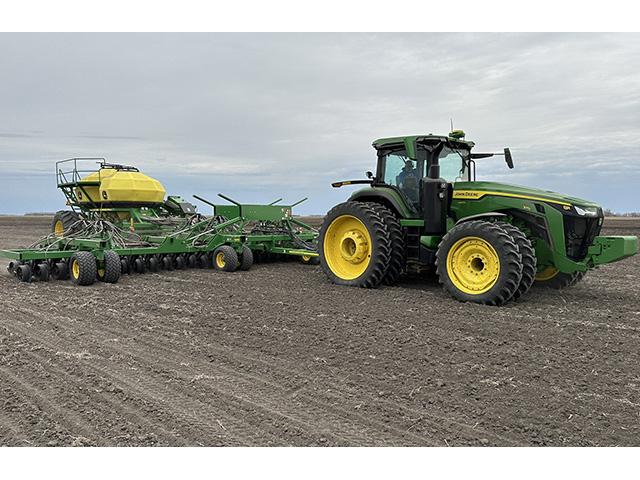Todd's Take
The Easy Part of Risk Management
I get it. Many of our readers won't want to read this week's column because it's about options and they know options are a waste of money. They're not alone. A 2017 survey by Farm Credit Services of America found that only 25% of farmers across the Corn Belt used futures or options to market their grain (Survey highlights found at http://bit.ly/…).
One of the more popular arguments against buying options came from infomercials, which once claimed that 90% of options expire worthless and said the smart money was on the short side of the market. Like many late-night claims, that one didn't hold water.
According to The Options Industry Council (OIC), an industry cooperative set up to provide education about the benefits and risks of exchange-listed equity options, 30% of options expire worthless, 60% are closed out before they expire and roughly 10% are exercised in the money. (Hear OIC's 7-minute podcast, "Common Misconceptions" at http://bit.ly/…).
Granted, the OIC is talking about options on stocks, but they contend the popular myth about 90% of options expiring worthless was invented by people promoting the short side of the market as a way to easy riches. An honest accounting would likely find the 90% claim to also be wrong for commodity futures options as the sources usually cited ignore the large percentage of options that are closed out before they expire.
For anyone concerned about the possibilities of more record yields and even larger grain supplies in 2018, the abandonment of NAFTA, missiles from North Korea, the future of China's economy, a rising U.S. dollar, or any other bearish threat, take a good close look at the risk/reward ratio of an inexpensive put option. One such example for protecting 5,000 bushels of corn production would be the purchase of a December 2018 $3.20 corn put, priced at 2 cents on Monday.
Keep in mind this is an educational discussion, not specific investment advice. You may even prefer some other variation of risk management, but before you categorically write off options as a marketing tool for grains, consider four different scenarios.
P[L1] D[0x0] M[300x250] OOP[F] ADUNIT[] T[]
Scenario 1: The worst-case scenario for purchasing the $3.20 put would be if no major bearish threat happens and December corn slowly trickles down to $3.20 by Nov. 23, the day the put expires worthless. The $100 cost of the put, not including commission, for 5,000 bushels of corn production adds $4 an acre to a production cost that USDA estimates will total $645.26 in 2018.
Scenario 2: A more normal path for corn prices includes some kind of weather concern early in the summer when prices typically make their seasonal highs and then fall toward harvest lows. Many might think the put won't have any value unless December corn expires below $3.18 in November, but that is not correct.
First, if you bought the put instead of forward selling 25% of your 2018 crop, you just allowed yourself the flexibility to sell forward in early summer, when seasonal highs are typically made in cash corn. In some years, that may be the bigger benefit.
Second, if December corn then falls toward harvest, as it seasonally tends to do after May, you will have a chance to sell the put for a profit, depending on how far corn drops and how much time is left in the option.
Take 2016 as an example. The December 2016 $3.20 corn put could have been purchased for roughly 3 1/2 cents before Christmas of 2015 and it fell to less than 2 cents by mid-June when December corn traded above $4.40. By the end of August, December corn dropped to $3.15 1/2, the put traded above 15 cents, and commercials had turned net long. The opportunity was there to reduce one's cost of production by taking a profit in the put of 10 cents or more.
Scenario 3: If 2018 turns out to be a drought-inspired bull market, we can agree that the two cents a bushel spent on the put will expire worthless. But, again, if buying the put was an alternative to forward selling part of the 2018 crop in December 2017, the decision to buy the put allowed forward sales to be made later, likely at higher prices.
Scenario 4: Back to our initial concerns about NAFTA, North Korea, etc. If corn suffers a major bearish hit in 2018, the obvious benefit of owning a December $3.20 corn put is that it will provide solid price protection below $3.18 a bushel -- something that hoping and wishing can't do.
With DTN's national index of cash corn prices currently at $3.08 and December 2018 corn priced at $3.80, the December $3.20 put is offering to take 84% of the price risk in December corn off the table from now until Nov. 23. The peace of mind from that protection alone should be worth the price of admission, but as we have seen, the put also has other benefits.
Of course, there are other tools to manage risk, and they all have pros and cons. The bottom line is that no one knows what is going to happen during the next 11 months and the bearish risks are high. Committing to early cash sales is one possibility, but it's only prudent for part of the 2018 crop and it means locking in prices near their lowest levels in 11 years. With all the risk that lies ahead in 2018, it's a shame more don't take the time to consider the benefits of an inexpensive put option.
Todd Hultman can be reached at Todd.Hultman@dtn.com
Follow him on Twitter @ToddHultman1
(CZ/BE)
Copyright 2017 DTN/The Progressive Farmer. All rights reserved.



